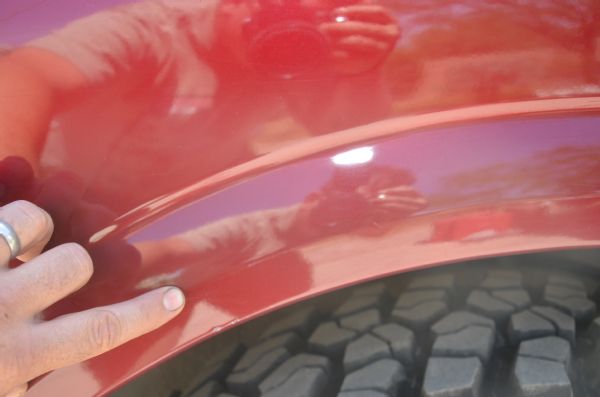
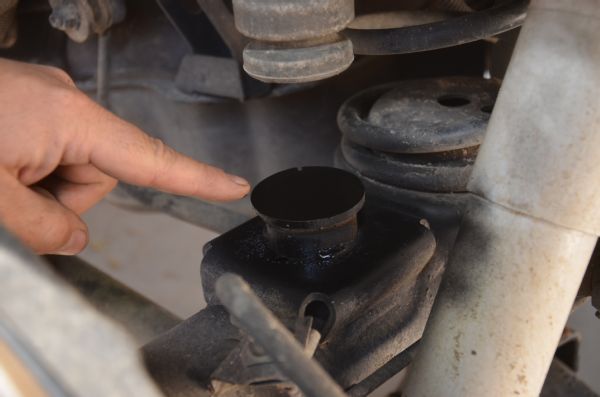 Verne Simons
Senior Editor, Jp
Verne Simons
Senior Editor, Jp
Our buddy Dave has an Isuzu Amigo. Granted, it’s pretty well modified by one hell of a fabricator and exhaust guy (that’s still Dave we’re talking about), but it’s different. It seems pretty reliable, makes lots of power (for a V-6), and is quite capable. We’ve always liked it, and that means we’d love to own one of our very own.
Research showed us that Isuzu 4x4s are inexpensive, last forever, and have a following of enthusiasts
One day we got to talking to Dave about Isuzus. His experience spiked our interest in the somewhat obscure Japanese automaker. Isuzu has been around for a long time and tends to get involved in collaborations with other automotive manufacturers. The interwebs tell us that the first Isuzus in the U.S. were the Chevy/Isuzu Luv pic-up from 1972. The Luv is a fairly iconic rig. It made decent competition for Toyota, Nissan, and Ford in the 1970s. Since then, Isuzu has partnered with various GM-based entities (Chevy, GMC, Geo, Holden) and Honda, building vehicles that fill a variety of niches both on the road and off. In 2009, Isuzu got out of the light-duty passenger vehicle business in America, but commercial-grade Isuzus are still available and used Isuzu 4x4s are plentiful.
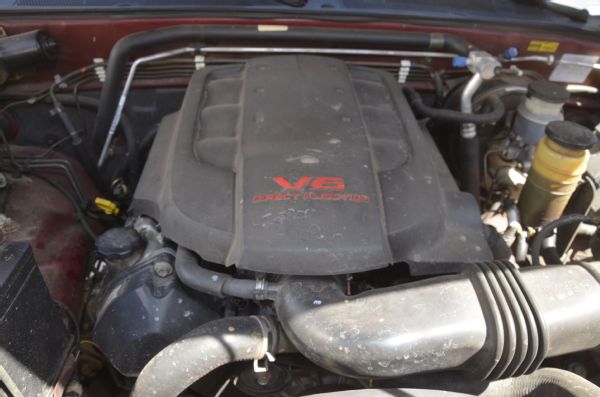 Our Rodeo had a few issues when we bought it. In hindsight we would have opted for an older Rodeo. Our 2004 has the one-year-only 3.5L direct-injected dual overhead cam V-6 with variable valve timing. It sounds fancy. That means it’s efficient and makes plenty of power, but has some expensive and high-tech parts that with mileage (ours has 120K) may go bad. Our Rodeo needed a new high-pressure fuel pump. This pump is hard to find and $750 when you find one. An oil control valve? What’s that? It’s another $250. Boo! You live and learn. Otherwise the truck is pretty solid with a relatively large cast steel front differential housing, a regearable transfer case, and a strange Dana 44 rear axle with a limited slip and a larger (than standard Dana 44) pinion.
Our Rodeo had a few issues when we bought it. In hindsight we would have opted for an older Rodeo. Our 2004 has the one-year-only 3.5L direct-injected dual overhead cam V-6 with variable valve timing. It sounds fancy. That means it’s efficient and makes plenty of power, but has some expensive and high-tech parts that with mileage (ours has 120K) may go bad. Our Rodeo needed a new high-pressure fuel pump. This pump is hard to find and $750 when you find one. An oil control valve? What’s that? It’s another $250. Boo! You live and learn. Otherwise the truck is pretty solid with a relatively large cast steel front differential housing, a regearable transfer case, and a strange Dana 44 rear axle with a limited slip and a larger (than standard Dana 44) pinion.
Around the same time as our conversation with Dave, we realized that we were in the market for a fairly fuel-efficient, four-door vehicle to port the family from point A to point B. (In reality, we’re almost always in the market for another 4x4.) A little more research showed us that Isuzu 4x4s are inexpensive, last forever, and seem to have a dedicated following of enthusiasts. There is also a small amount of off-road aftermarket support with mail-order rock sliders, low T-case gears, winch bumpers, and suspension kits available for Isuzu Troopers, Amigos, pickups, and the Rodeo/Honda Passport. With a bit more digging, our interest was piqued. Being lifelong cheapskates, we also stumbled upon budget builds where owners had combined junkyard parts and a little torsion bar twisting to add lift and fit larger tires.
With that in mind, we started cruising Craigslist in search of a Honda Passport or Isuzu Rodeo. We found a truck, bought it, did some research, learned that we made a few mistakes, fixed them, made some modifications, and now have a budget-built Rodeo riding on 33-inch tires. It’s fun to drive around town, gets decent mileage (we’ve gotten 17.5 mpg on the highway), and is plenty capable for most off-road use.
As of today, besides the initial purchase price and a few maintenance items (some of which we could have avoided), we have spent a few hours and about $62 modifying our Rodeo, but there’s plenty more we can do.
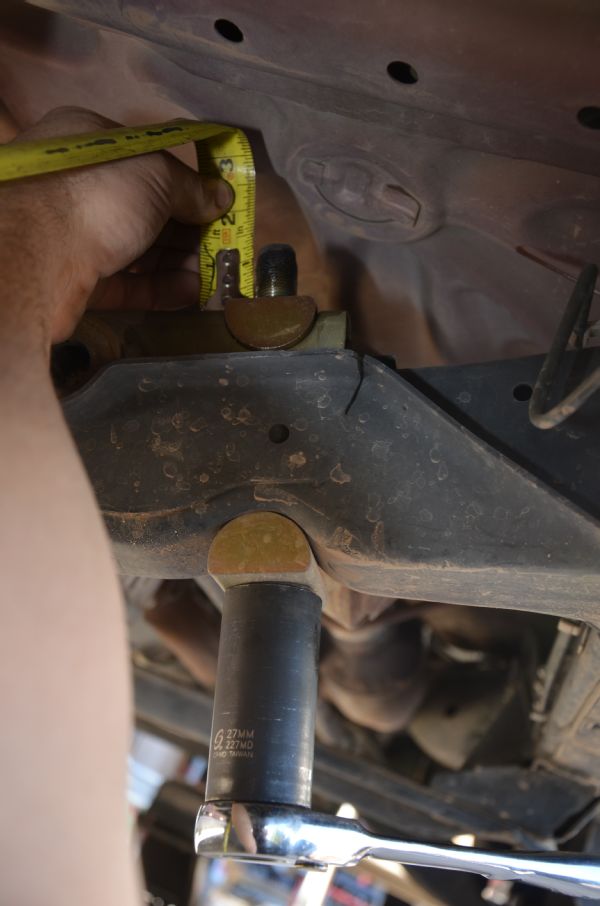
Cranking torsion bars for more lift is nothing new, but just because you can add 4-6 inches of lift does not mean you should. Droop or downtravel is important to a smooth ride both on- and off-road, and by cranking torsion bars way up you lose this. We just wanted 1-2 inches of lift up front. We started by measuring the threads exposed on top of the torsion bar adjuster screw. Then we unloaded the front suspension and tightened the torsion bars a few turns at a time, adding about 1⁄4 inch to the exposed threads until we got the desired 2 inches.
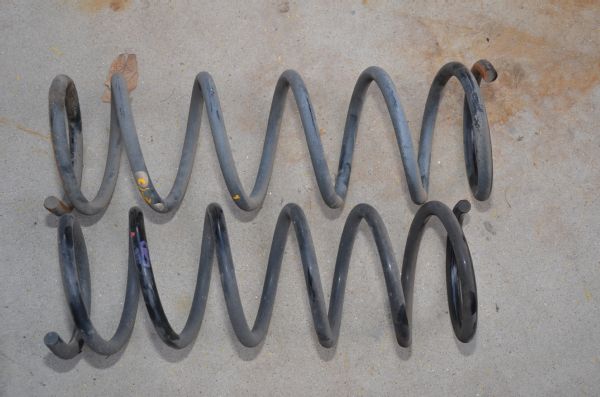
We picked up these rear coils for $62 at the local pick a part junkyard. They were in a 1996-ish Isuzu Trooper. To remove them, we just disconnected the shocks and rear sway bar endlinks and let the axle droop down. The coils don’t look much taller, but they do afford about 11⁄2 to 2 inches of lift over stock. If that’s not enough or you want to get new parts and skip the junkyard, you can get lift springs from Old Man Emu by ARB. Actually, from Independent 4x4 you can get all kinds of Isuzu suspension parts, including aftermarket shocks, coil spacers, links, body lifts, and more.

Installing taller coils in the back of the Rodeo is a bit more involved than removing the coils from the Trooper in the junkyard. We disconnected the rear shocks and removed them, disconnected the sway bar links, and had to remove the bolt from the axle end of the passenger-side upper control arm. This arm passes over the Rodeo’s gas tank, and in order to get enough droop out of the rear suspension to get the new coils in, you have to disconnect this arm. We also welded on these 1-inch bumpstop spacers. That keeps the larger tire out of the rear wheelwell on compression.

Now that our Isuzu was lifted a little bit we shifted gears to making more room for the tires. The first step is to remove the Rodeo’s plastic inner wheelwells and front mud flaps. Yes, inner wheelwells and mud flaps are nice, but not as nice as larger tires in our opinion. We’ll need to trim quite a bit from the front fenders of our Isuzu. You need more space up front because the tires steer while articulating.
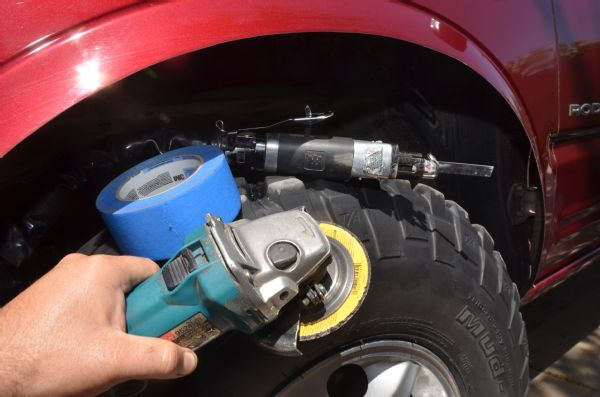
We’ve been complimented on our trimmed fenders before, and honestly we have quite a bit of experience with this. The key is to take your time. Use high-quality tools, tape off your lines, and cut cautiously. It’s easier to remove more metal if you haven’t trimmed enough than it is to add metal back if you’ve trimmed too much. We love our IR air saw, but also a 41⁄2-inch grinder with a flap wheel is critical. Another awesome tool for trimming fenders is a high-quality sheetmetal nibbler. If you make sure the cuts follow body lines, the result looks almost factory. Use the grinder to smooth out any irregularities in the cuts and to remove burrs from the cut edge. Trimming the plastic bumpers is basically the same: Cut with the air saw and finish the edge with the flap wheel.
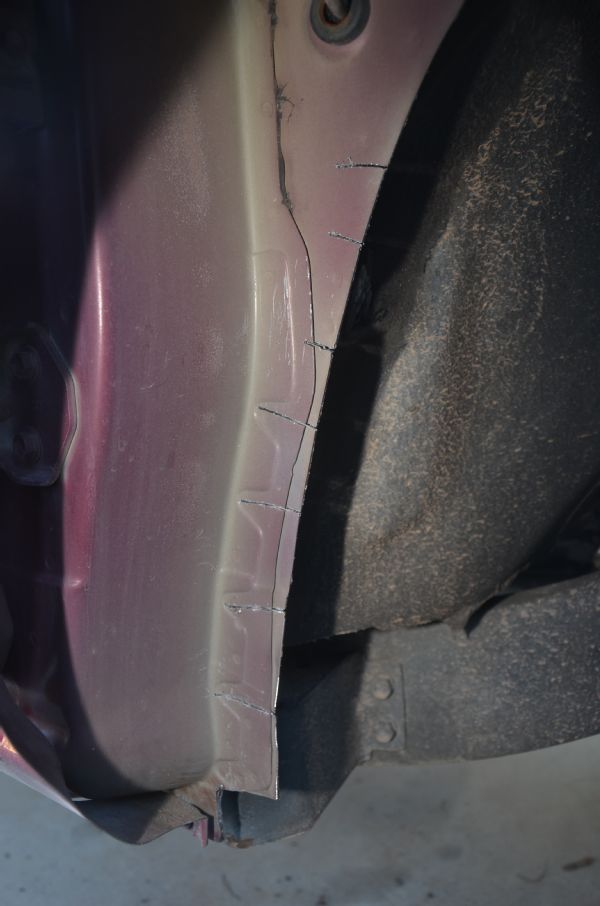
Inside the front wheelwells of our Rodeo are large pinch welds where two or more pieces of sheetmetal come together and are spot welded. These areas are structurally important but also get in the way of our new larger tires. To deal with them, we first cut off any excess metal (outside of the spot welds) and then made relief cuts with our air saw down to the base of the pinch weld.
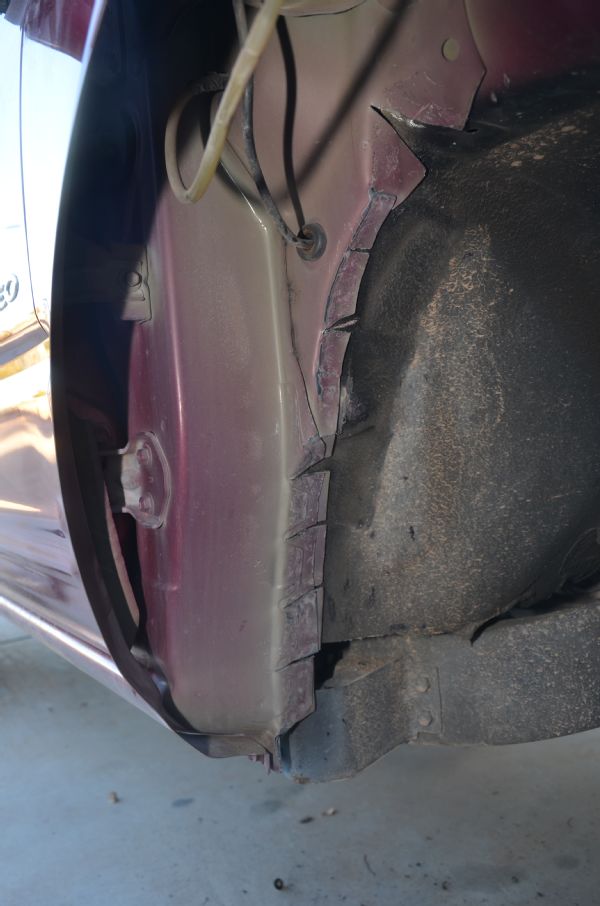 9
9
Once the relief cuts are made, simply use a BFH (big hammer) to fold the pinch weld over against the firewall and wheelwell. This preserves the strength of the spot welds. You can also add seam sealer, spray paint, undercoating, whatever you like to prevent rust from the cuts.
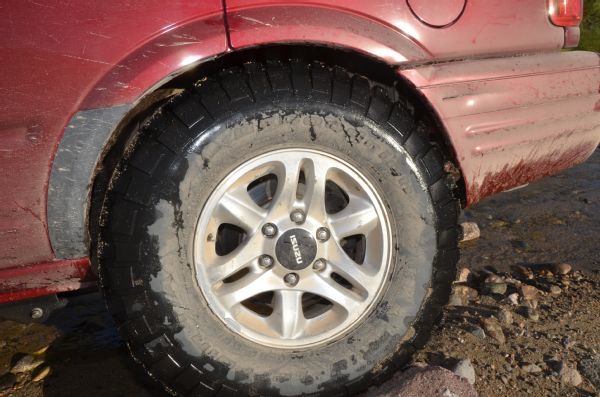
For the rear tires all we had to do was remove the factory mud flaps and use the air saw and grinder to remove a little sheetmetal.
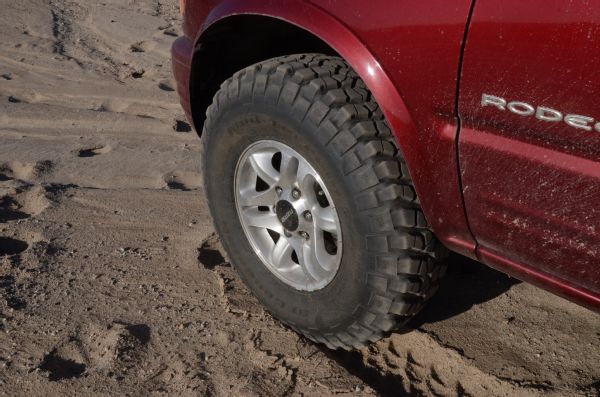
We’ve long been a fan of BFGoodrich tires, and we like the idea of tall skinny tires that fit our trimmed wheelwells. So when a set of five new 255/85R16 BFG KM2s popped up on Craigslist we bought them. As for wheels, there is nothing wrong with the aluminum wheels our Isuzu came from the factory with. The offset is correct, and the wheels’ safety bead is larger than on many aftermarket wheels. Only drawbacks are the wheels are fairly narrow and the load range on the tall skinny tires is pretty high for our Rodeo.
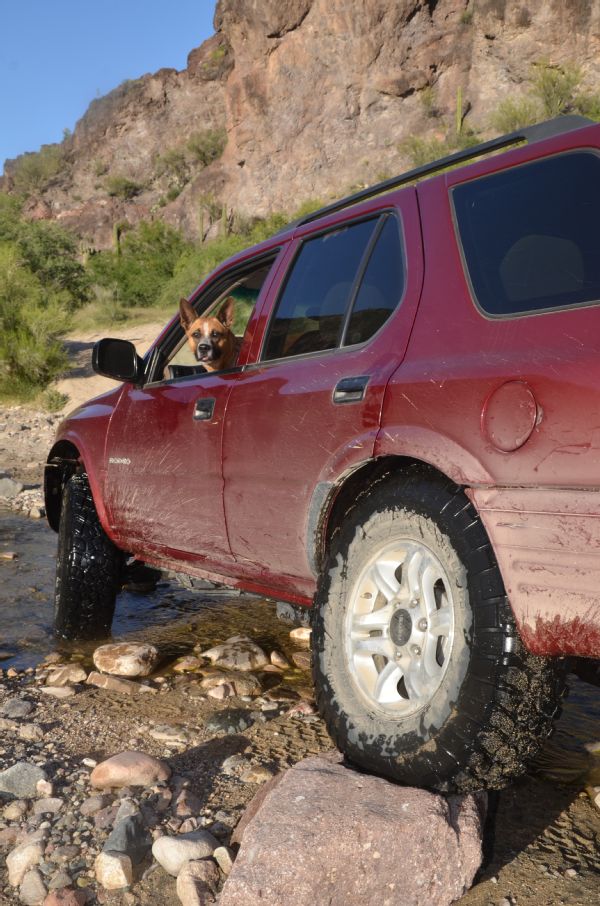
If we have time and don’t just sell the Rodeo, we’d like to add a set of Revolution Gear 3:1 transfer case gears and a set of rock sliders from Independent 4x4. Also, it looks like ARB makes a front locker—and a rear locker. Also you can retrofit locking hubs to the front axle by swapping parts from an older Rodeo. Oh boy! Here we go again.